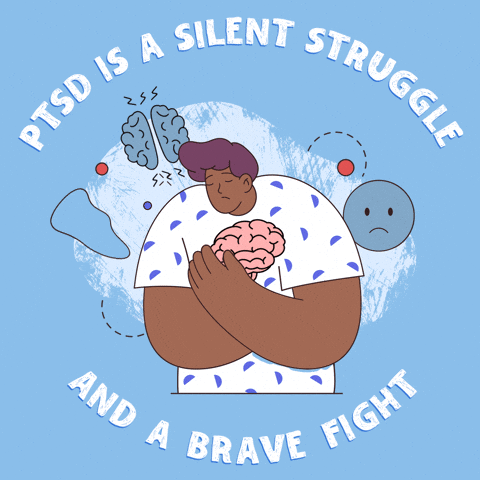
How Women with ADHD Can Manage Relationships: Effective Communication and Conflict Resolution
For women with ADHD, navigating relationships—whether romantic or platonic—can present unique challenges. ADHD symptoms like distraction, impulsivity,...

For many women, trauma is a deeply personal experience that can impact emotional well-being, relationships, and overall quality of life. From childhood abuse to domestic violence or accidents, trauma can leave lasting scars. Cognitive Behavioral Therapy (CBT) is a powerful tool in helping women process these experiences, manage PTSD (Post-Traumatic Stress Disorder), and develop coping strategies to heal from trauma-related issues.
Let’s explore how CBT can guide women through trauma recovery, offering hope and emotional resilience.

Trauma can affect anyone, but women often experience trauma in ways that are uniquely influenced by societal pressures, expectations, and their roles in caregiving. Whether it’s sexual trauma, domestic violence, or workplace harassment, these experiences can lead to PTSD, anxiety, depression, and feelings of isolation.
Research Insight: Studies have shown that women are twice as likely as men to develop PTSD after traumatic events, with one in nine women experiencing PTSD at some point in their lives (National Center for PTSD).
CBT is a highly effective approach for addressing trauma because it focuses on changing the negative thought patterns that develop after traumatic experiences. The core goal is to help women challenge these thoughts and replace them with healthier, more constructive beliefs.
Trauma often leads to distorted thinking, where women may blame themselves for the traumatic event or feel as though they’re powerless. CBT helps identify these cognitive distortions and challenge them, gradually shifting the narrative from self-blame to self-compassion.
Tip: By using thought records in CBT, women can document their negative thoughts, examine the evidence for and against them, and create more balanced perspectives. For example, a woman might replace “I deserved what happened” with “I was not responsible for the actions of others.”
Example: A woman who has experienced domestic violence might feel guilt or shame, but CBT helps her understand that the abuse was not her fault. Instead, she learns to place responsibility on the abuser, fostering self-compassion and emotional healing.
For women with PTSD, common symptoms include flashbacks, nightmares, and hypervigilance. CBT offers specific techniques to address these symptoms, helping women manage their emotional responses and regain control over their lives.
CBT often includes exposure therapy, where women gradually confront their trauma-related memories, images, or triggers in a safe and controlled environment. This helps to desensitize them to the trauma and reduce the emotional intensity associated with it.
Research Insight: Studies in Psychiatric Services have shown that exposure-based CBT can significantly reduce PTSD symptoms, with many women experiencing fewer flashbacks and less avoidance after engaging in this therapy.
Tip: Exposure therapy can be paired with relaxation techniques like deep breathing or mindfulness to help women stay grounded when recalling difficult memories.
Example: A woman who experiences flashbacks after a car accident may gradually confront reminders of driving through a combination of imagined and real-life exposure, learning to manage her anxiety over time.

Trauma often leaves women feeling emotionally overwhelmed, with sudden mood swings or feelings of anger, sadness, or numbness. CBT teaches women how to regulate these emotions, empowering them to cope with the ongoing impact of trauma.
Through cognitive restructuring, women can identify the negative core beliefs that fuel emotional distress and replace them with healthier, more balanced beliefs. This technique helps women build emotional resilience and regain a sense of safety in their everyday lives.
Tip: Practice self-soothing exercises like progressive muscle relaxation or guided imagery, which can complement cognitive restructuring and provide emotional relief in moments of stress.
Example: A woman who feels constantly anxious after a traumatic event may reframe her belief that “I’m not safe anywhere” into “I have the tools to keep myself safe, and I can manage my fear.”
Trauma can make women feel powerless and disconnected from their sense of self. CBT empowers women to reclaim their sense of control, build resilience, and develop strategies for navigating triggers or stressors in the future.
CBT helps women not only process past trauma but also prepares them for the future by fostering problem-solving skills and emotional resilience. This involves developing healthy ways to cope with triggers and preventing relapse into negative thought patterns.
Research Insight: The International Journal of Psychiatry in Medicine emphasizes that CBT is one of the most effective therapies for trauma recovery, as it combines both past-focused work (processing trauma) with future-focused coping strategies.
Tip: Keep a resilience journal where you document daily moments of strength, growth, or small wins. This can help reinforce a positive mindset and remind you of your progress over time.
Q: How does Cognitive Behavioral Therapy (CBT) help women process trauma?
A: CBT helps women process trauma by identifying and challenging the negative thought patterns and beliefs that result from traumatic experiences. Through cognitive restructuring and exposure therapy, women can gradually confront and desensitize their trauma, replace harmful thoughts with more balanced ones, and develop effective coping strategies.
Q: What types of trauma can CBT help with?
A: CBT can be effective in treating a wide range of trauma-related conditions, including PTSD (Post-Traumatic Stress Disorder) resulting from experiences like childhood abuse, sexual assault, domestic violence, accidents, or other significant traumatic events. It helps address symptoms like flashbacks, nightmares, hypervigilance, and emotional dysregulation.
Q: How does exposure therapy work in CBT for trauma?
A: Exposure therapy is a key CBT technique where individuals are gradually exposed to memories or reminders of the traumatic event in a safe and controlled manner. This reduces the emotional intensity associated with the trauma and helps women learn to manage their responses over time.
Q: Can CBT help with emotional regulation after trauma?
A: Yes, CBT equips women with emotional regulation techniques that allow them to manage mood swings, anxiety, or numbness that may result from trauma. Techniques such as mindfulness, deep breathing, and cognitive restructuring help women gain control over their emotions and reactions.
Q: How long does CBT take to work for trauma recovery?
A: The length of therapy varies depending on the individual and the severity of the trauma, but many women begin to experience improvements in their symptoms after a few weeks of CBT. Some may require several months of therapy, depending on the complexity of their trauma and personal progress.
The information provided in this article is for informational purposes only and is not intended as a substitute for professional therapy or mental health treatment. Cognitive Behavioral Therapy (CBT) should only be administered by a licensed mental health professional who is trained in trauma-informed care. The effectiveness of CBT for trauma recovery may vary depending on the individual, and it is important to consult a qualified therapist or counselor to determine the best course of action for addressing trauma and PTSD. This article does not constitute medical or psychological advice, diagnosis, or treatment. Always seek the advice of a healthcare provider before beginning any new treatment for trauma or mental health concerns.
Trauma can leave lasting emotional scars, but Cognitive Behavioral Therapy provides women with tools to process and heal from their experiences. By addressing negative thoughts, managing PTSD symptoms, and building emotional resilience, CBT empowers women to reclaim their lives after trauma.
Takeaway: Recovery from trauma is a journey, but with CBT, women can develop coping strategies that allow them to heal emotionally, regain control, and move forward with strength.
Embrace it: Trauma does not define you. CBT offers the tools to rewrite your narrative and build a future grounded in resilience and self-compassion.

For women with ADHD, navigating relationships—whether romantic or platonic—can present unique challenges. ADHD symptoms like distraction, impulsivity,...

Managing time can be a challenge for anyone, but for women with ADHD, time management often feels like an insurmountable task. ADHD can make it diffic...

Relationships—whether romantic, familial, or friendships—are central to our emotional well-being. But navigating these relationships can sometimes fee...

Career-related stress is something most women face at some point in their professional lives. The balancing act between personal and professional resp...

While Cognitive Behavioral Therapy (CBT) focuses on challenging unhelpful thought patterns, combining it with mindfulness practices can take emotional...